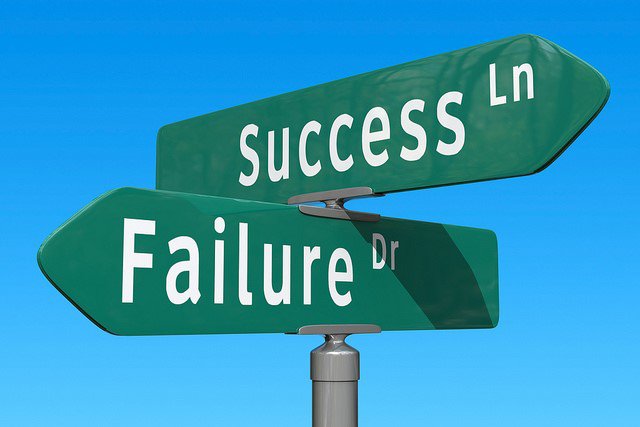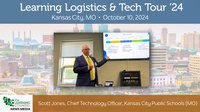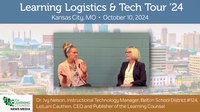Failure, in one way or another, is likely unavoidable. The experience can take on different meanings for each of us, but the fear behind it is something we all share. Moments of failure are typically viewed as poor performances. A teacher attaches a grade to an assignment or test, and the course often continues, in spite of the fact that a number of students have not mastered a significant portion of the material.
This culture creates a fear of failure and a sense of indifference to learning rather than encouraging students to reflect on and learn from these experiences. Sadly, in some cases, students become convinced that they are simply not good at a subject. At junctures in learning marked by failure, there is often no going back to problem-solve the causes of failure or experiment with new methods for approaching the task with an important lesson learned.
As a result, students often progress to more complex concepts or tasks or higher grade levels with large gaps in their understanding, commonly known as Swiss-cheese achievement. Perseverance, a stepping-stone for success and a quality that is often discussed as being essential in the behavior of young students, wasn’t learned in the classroom because it wasn’t encouraged by teachers through their pedagogical practice. However beyond conventional education, persistence after failure is valuable because, through repetition, refinement and encouragement, learning and growth happen.
What Does the Research Say?
For years, motivation was thought of as something that students either had or didn’t have: an innate quality that couldn't be learned. It was regarded as a fixed trait like intelligence, the talent to play the piano, or the ability to catch a football. This fixed mindset is so fundamental to our education system that it has resulted in pedagogical practices that document intelligence rather than cultivating it.
Recent research suggests that this isn’t the case at all. Carol Dweck, an educational psychologist at Stanford University, argues that our most basic abilities as humans are developed through sustained time and effort. At the center of this theory is a student’s commitment to their craft and their motivation to keep practicing. For students to be motivated to learn, they must believe in their own ability to be successful.
As teachers, we must remind students that their brains, just like a muscle, get stronger (and perform better) with use. The growth mindset fosters motivation for learning by countering dominant stereotypes or long-held perceptions of inadequacy or inability.
Designing Curriculum for the Growth Mindset
The pressures of meeting a litany of curriculum expectations or preparing students for standardized tests are time-consuming imperatives. For this reason, designing curricula to foster a growth mindset can be a challenge for teachers and instructional designers.
Some companies have drilled down into this predicament and developed curricula that offers a more personal learning experience, with an emphasis on improvement. It’s an empirical fact that students learn better when they have a choice in the way they absorb and communicate information and are able to measure their own progress over time.
The instructional designers at one digital learning company, Hekademia, have tackled this challenge by:
a) Carefully designing lessons and assessments to allow for personalization
b) Scaffolding skills; and
c) Providing targeted remediation for students where they need support.
In this way, students see that learning is a process; they don’t simply give up if they don’t find success the first time. Further, Hekademia uses the principles of competency-based education (CBE) as a framework for re-designing curriculum for the growth mindset.
Competency-based learning
Competency-based learning systems embed “grit”—the ability to stick with things until you master them—into the learning process by linking hard work to progress. Since students must demonstrate competency before moving on, sub-standard performances are treated as learning opportunities, not failures. Students are automatically directed to specific content based on their current level of understanding, whether those approaches are through core content, remediation lessons, or enrichment opportunities.

If one learning attempt isn’t successful, the student shifts pathways until he or she achieves mastery, no matter how many attempts it takes. For example, with Hekademia, in their English courses, students are able to choose the text they will study that best corresponds to their lexile levels or personal interests. Mini workshop lessons are also provided for students on specific skills such as reading effectively, providing additional support where needed.
In science, students are hooked with an interesting case study that needs to be solved and are then presented with preliminary evidence to get them started. They are given hints throughout the lessons and submit frequent work to their teacher for feedback. Students are expected to struggle along the way to make sense of the evidence and theories. Based on their understanding of each component, the system releases new information to help them complete the investigation. In both cases, timely and targeted remediation promotes the growth mindset: "I haven’t figured it out yet, but I will."
Buying Digital Curriculum vs Building It Yourself
Educators would likely agree that one of the most important elements for student success is targeted remediation that encourages students to push through their struggles. The point of contention is how to acquire and implement digital curriculum that personalizes remediation in this way.
Schools often use general remedial courses in the summer as a last attempt to pass their students before the next school year, but at this point, it’s too late. This approach promotes the stigma of failure and fosters an entire year of frustrating learning experiences for the student. If failure is a natural part of the learning process, digital curriculum must be designed to detect students’ problem areas in real time, and be prepared to offer new approaches to teaching that specific skill.
Understandably, many schools have opted to build their own digital curriculum in an attempt to provide their students with the same high-quality curriculum they receive in the classroom. However, research has shown that schools and districts who have tried to put together their own digital curriculum fall short of the ability to create truly engaging lessons that are also adaptive and build specifically around what individual students are doing and failing at.
The task of designing courses in an online learning environment requires a great deal of expertise in curriculum mapping, instructional design, and programming algorithms for intervention and remediation. We often think that the "DIY approach" will save us money, but the time, resources, and stress involved in developing an online course, without such expertise, can result in higher costs in the long run—financially and in terms of student performance.
Moreover, teachers often tire of such situations before the course is complete. Then, frazzled teachers must work to stay ahead of their students, leaving little time for their main teaching responsibilities. My advice is to trust the experts and save yourself the headache, time, and money of trying to do it yourself.
What Failure Offers Students
Students need to be allowed to fail, process, and learn from their experiences. Because failure is a temporary condition, it is acceptable and can even be desirable with remedial exercises and highly supportive teaching. This style of thinking completely changes how students view their own academic failures. Poor performance is not a permanent or shameful situation anymore. Such innovative thinking enables students to develop at their individual rates, to learn to appreciate the subject in ways that would not have happened if they had been initially frustrated and held back indefinitely by the content under study.
Conclusion
The whole concept of persistence through failure can sound clichéd, but continuing despite setbacks is an inevitable part of the process for successful people. As Henry Ford has stated, “failure is simply the opportunity to begin again, this time more intelligently.” By creating curricula that allow for differentiated learning, a flexible approach to time management, and an ongoing process that involves teachers, student success and motivation for learning are possible.











